The Alaskan malamute, affectionately nicknamed “Mal” or “Mals,” is a lovable and playful breed known for its stubborn nature and high intellect. Originally bred by the Mahlemiut, an Inuit tribe located in northwest Alaska, the Mal remains true to its original purpose. Malamutes were bred for sledging, to pull large, heavy loads in packs.
Specifically, they were used for hauling the day’s hunting load, including polar bears, seals, and other large Alaskan game. The Alaskan malamute is known for its affectionate and people-loving personality, making the breed great family pets for an active lifestyle. Read on to learn more about the Alaskan malamute.
Description of the Alaskan Malamute
The Alaskan malamute is a large breed dog known for its distinct coloration, deep chest, erect ears, playfully curled tail, and powerful shoulders. Often confused with the Siberian husky, the malamute can be solid white, or a combination of white with colors ranging from light gray to black, sable, and shadings of sable to red. White is always the predominant color of the undercarriage, face, and parts of the legs, and feet.
The malamute is known for its beautiful face markings, which consist of a cap sometimes coupled with a blaze or mask. The malamute tail, with Spitz group origin, is well-furred, and carried over the back.
The Mal has a thick, coarse guard coat coupled with a weatherproof undercoat that is dense, oily, and wooly, standing at approximately 1-2 inches in depth. The undercoat and guard coat can vary in length, but generally the coat will be short to medium along the sides of the body, and longer around the shoulders, neck, back, rump, and in the breeching and plume.
Life Expectancy and Size
The Alaskan malamute has a life expectancy of approximately 10-12 years.
The female malamute stands at approximately 23 inches tall, and weighs around 75 pounds. The male Alaskan malamute stands at approximately 25 inches, and weighs around 85 pounds. Variations in size are acceptable as long as proportions, mobility, and functionality are maintained.
Like all purebred dogs, Alaskan malamutes, are prone to certain conditions and diseases. The breed can suffer occasionally from gastric torsion, seizures, hemeralopia (difficulty seeing in bright lights), and polyneuropathy (the degeneration of nerves in the body). Hip dysplasia and cataracts can affect the breed, so ensure that your breeder is reputable and has tested for hereditary conditions.
Protective Ability
While malamutes are intimidatingly large in size, they often fail to induce fear beyond that. Malamutes have particularly soft, almond-shaped eyes that lend to their sweet, lovable nature. Mals are known for being overly friendly with strangers, making them particularly non-heroic guard dogs. Alaskan malamutes can be testy around strange dogs, so proper socialization and rewarding positive interactions are key.
Training
Alaskan malamutes are a cunning, willful, independent breed, which makes them extremely playful but stubborn in training. The Mal is a pack animal, which means that he will happily join your family, but will test your ability to properly lead the pack as the owner. Mals require a diligent owner who can skillfully train them to behave properly. Reward-based training can help teach this stubborn breed that it’s fun to listen to human requests.
Alaskan malamutes require daily exercise, for their origin as working dogs has not decreased through years of domestic pet ownership. The malamute needs to be trained and socialized early, and rewarded with positive reinforcements. This breed requires an experienced owner who will not forego proper training for quick results.
Energy Level
Malamutes were bred as a working dog, and require daily exercise to keep them mentally and physically stimulated. Some traits are hard to break, like digging, so finding a positive outlet for this characteristic is helpful.
Malamutes are a great companion for those who love to explore, hike, swim, and spend time in the snow. These dogs will show their true personality when given the chance to romp in the snow, so prepare for a playful and energized dog when encountering their native climate.
What Living with an Alaskan Malamute is Like
Vacuums, lint rollers, and lots of space is key to coexisting peacefully with the extremely furry Alaskan malamute. Mals thrive in cold weather environments ,and can withstand very cold temperatures. While resilient in the cold, malamutes should be kept indoors during the summer, as they do have more trouble regulating their body temperature in heat.
Malamutes are best suited for larger homes, but can adapt to apartment-style living as long as they are given ample walks or space to run freely and safely at a local park.
Alaskan malamutes are well-mannered indoors, as long as given ample exercise and mental stimulation. Without exercise, malamutes can become destructive. Alaskan malamutes are not as vocal as some other northern breeds, but will chatter with you and show off a howl or two. Malamutes are great family companions, and are happy to be gracious hosts to new visitors.
Care of the Alaskan Malamute
The most important things to remember about malamutes are their need for exercise, attention, and grooming maintenance. If you and your family have an active lifestyle, a malamute could be a great fit for you. Experience and readiness for the breed are your biggest helping hands, so make sure to thoroughly prepare yourself for the needs and expectations of the breed.
Environmental Needs
Mals thrive in cold weather climates, such as that in their state of origin, Alaska. Malamutes can adapt to other environments, but special care and attention will be needed in warmer climates, as the breed is built for withstanding the cold, not extreme heat.
Malamutes are best suited for homes with fenced in yards. Make sure the fence is buried into the ground because malamutes love to dig, and will happily escape for a romp around the neighborhood. It’s difficult to entirely stop this behavior, so instead you can provide a designated digging area, like a sandbox, for your Mal to take part in one of his favorite activities.
Exercise Needs
Malamutes thrive in high energy environments – they will happily join in hikes, jogs, walks, swims and more! Malamutes need daily exercise, even up to twice daily, depending on your dog’s personal needs, and how much space he or she has. Malamutes thrive in cold weather, so don’t be surprised when your malamute tries to take you outdoors in the middle of a snowstorm.
Inadequate exercise will lead to frustration and destruction, so it is important to bring the malamute into an active family that will adequately mentally and physically exhaust the pup. Malamutes are task-seekers who can be given loads to carry, or taught to sledge at a young age. For the average owner, a full dog pack will suffice when hiking, so let him carry his own water and treats – and perhaps yours!
Shedding and Grooming
To prevent excessive shedding, the malamute requires brushing roughly 2-3 times weekly, as they have dense, long coats. During certain times of the year, shedding may increase seasonally, so utilize an undercoat brush to help shed off the extra winter coat. Oddly, malamutes have a catlike tendency to self-groom, so baths are recommended only about twice a year.
Like all dogs, your malamute will require frequent teeth brushing (up to 2-3 times a week), and nail trimming as needed. Since the malamute’s ears are erect, they often require more frequent cleaning, so keep their ears gunk free weekly. Never insert anything into the ear canal, only clean the outer part of the ear and consult a vet if concerned.
Ideal Home Environment
Malamutes are great for anyone with an active lifestyle who is ready for consistent and diligent training. While they love people, they can be testy around strange dogs, cats, or livestock. Early socialization is key to avoiding issues in adulthood.
Malamutes are known for being great family dogs, and great with children, but, like all dogs, it’s important to socialize them with children early. It’s also important to teach children how to properly engage with their new fur-sibling.
The ideal owner of the malamute will be prepared for his stubbornness and sharp intellect. It’s important to remember that the malamute needs an owner that he or she respects, otherwise he will run the household, and that’s never a good thing.
The ideal home has space for the malamute to freely roam, and has securely fenced the yard to be escape-proof. As long as you and your family are prepared for an active dog with high energy, the malamute will be a lovable and affectionate addition to your family.
Health Concerns
Like all breeds, the malamute can fall prey to certain hereditary issues if poorly bred. Find a reputable breeder who shows proof of genetic testing, and can put you in contact with happy customers who have not had issues with their puppies.
Diet and exercise are necessary to keep the breed healthy, and to live a long life, so do not overfeed or fall prey to begging eyes for extra treats!
Behavior Problems
Malamutes were bred for aiding in hunting, and working alongside people. With this history, Alaskan malamutes tend to have a prey drive, whether large or small. They have been known to chase neighborhood cats, and even be aggressive towards livestock. It is extremely important that your Mal is socialized young and frequently with all animals, small and big, and rewarded for positive interactions.
Without early socialization, your Mal may have a tendency to be aggressive towards other animals, which would not bode well for the safety of your Mal or neighborhood pets. Malamutes are known to be very people friendly, but that does not excuse poor socialization with strangers. Any dog can have behavioral issues when not properly trained and introduced, so tackle these issues while the puppy is young and can learn from an abundance of positive experiences.

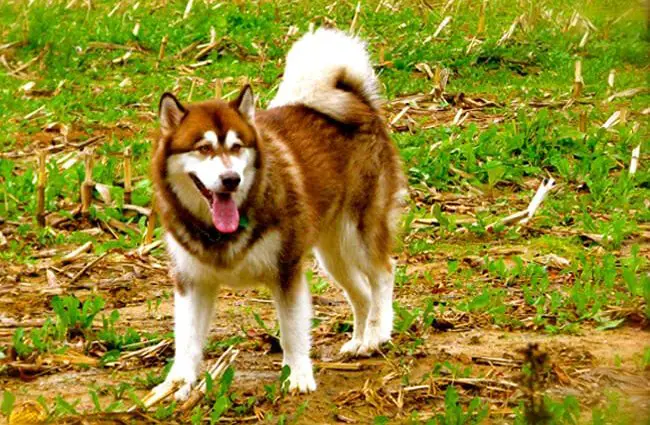

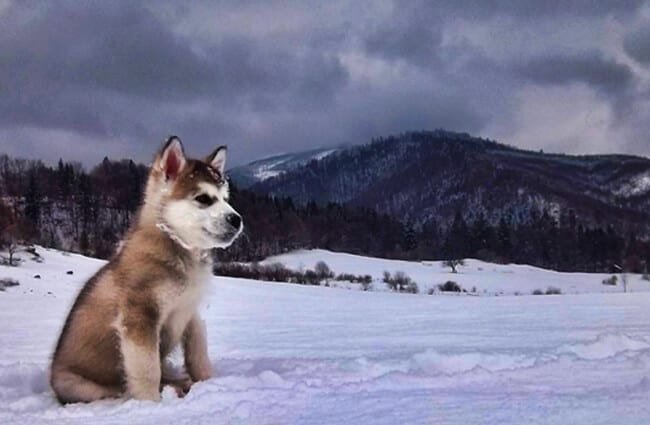
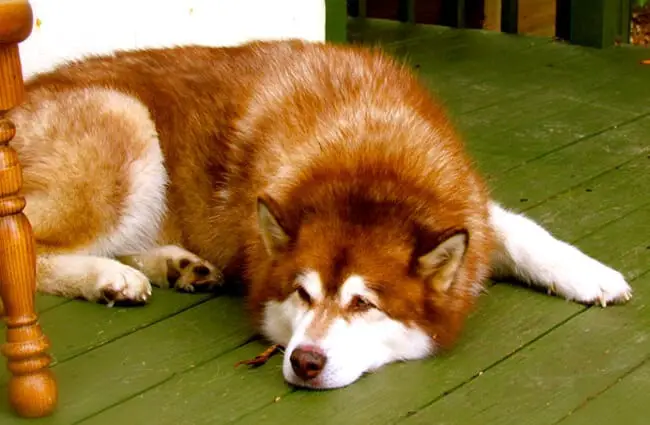
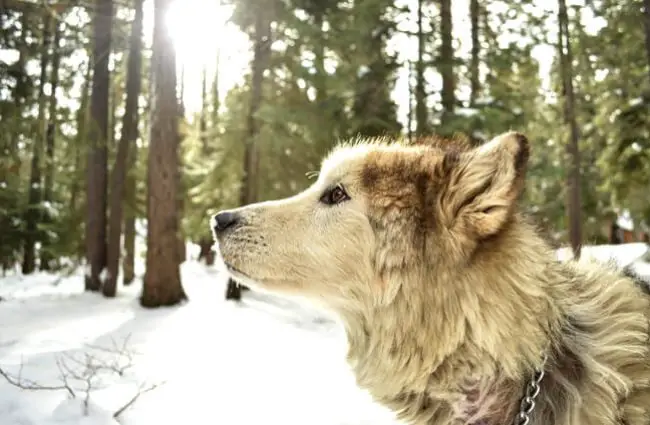
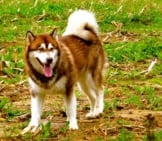



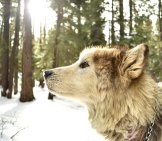



![Red Angus Closeup of a beautiful Red Angus cowPhoto by: U.S. Department of Agriculture [pubic domain]https://creativecommons.org/licenses/by/2.0/](https://animals.net/wp-content/uploads/2020/03/Red-Angus-4-100x75.jpg)

